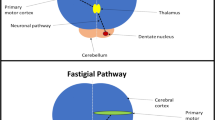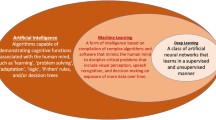Abstract
Chronic disorders of consciousness, particularly the vegetative and the minimally conscious states, pose serious diagnostic challenges to neurologists and clinical psychologists. A look at the concept of “diagnosis” in medicine reveals its social construction: While medical categorizations are intended to describe facts in the real world, they are nevertheless dependent on conventions and agreements between experts and practitioners. For chronic disorders of consciousness in particular, the terminology has proven problematic and controversial over the years. Novel research utilizing functional brain imaging has demonstrated that a substantial number of patients retain their capabilities to communicate by brain activity even when they are incapable of classic verbal and nonverbal responses due to the dysfunction of their motor behavior. Moreover, thorough diagnostic assessments constitute the foundations for suitable rehabilitation measures. Thus, ethical arguments support the claim that the potential of emerging methods for communication via brain activity should be evaluated comprehensively in patients with chronic disorders of consciousness, once the technological methodology for this endeavor progresses to a reliable and affordable stage.
Similar content being viewed by others
References
Childs, N.L., W.N. Mercer, and H.W. Childs. 1993. Accuracy of diagnosis of persistent vegetative state. Neurology 43(8): 1465–1467.
Andrews, K., L. Murphy, R. Munday, and C. Littlewood. 1996. Misdiagnosis of the vegetative state: retrospective study in a rehabilitation unit. British Medical Journal 313(7048): 13–16.
Monti, M.M., A. Vanhaudenhuyse, M.R. Coleman, M. Boly, J.D. Pickard, L. Tshibanda, A.M. Owen, and S. Laureys. 2010. Willful modulation of brain activity in disorders of consciousness. New England Journal of Medicine 362(7): 579–589.
Bernat, J.L. 2009. Chronic consciousness disorders. Annual Review of Medicine 60: 381–392.
McQuillen, M.P. 2001. Pearls and pitfalls of ethical issues in neurology. Seminars in Neurology 21(4): 353–358.
Jennett, B., and F. Plum. 1972. Persistent vegetative state after brain damage. A syndrome in search of a name. Lancet 1(7753): 734–737.
Kretschmer, E. 1940. Das apallische Syndrom. Zeitschrift für die gesamte Neurologie und Psychiatrie 169: 576–579.
The Multi-Society Task Force on PVS. 1994. Medical aspects of the persistent vegetative state (first of two parts). New England Journal of Medicine 330(21): 1499–1508.
The Multi-Society Task Force on PVS. 1994. Medical aspects of the persistent vegetative state (second of two parts). New England Journal of Medicine 330(21): 1572–1579.
Giacino, J.T., S. Ashwal, N. Childs, R. Cranford, B. Jennett, D.I. Katz, J.P. Kelly, J.H. Rosenberg, J. Whyte, R.D. Zafonte, and N.D. Zasler. 2002. The minimally conscious state: definition and diagnostic criteria. Neurology 58(3): 349–353.
Laureys, S., G.G. Celesia, F. Cohadon, J. Lavrijsen, J. León-Carrión, W.G. Sannita, L. Sazbon, E. Schmutzhard, K.R. von Wild, A. Zeman, G. Dolce, and European Task Force on Disorders of Consciousness. 2010. Unresponsive wakefulness syndrome: a new name for the vegetative state or apallic syndrome. BMC Medicine 8: 68.
Brukamp, K. 2012. Vegetative state?—a definition revisited. In Vegetative state: a paradigmatic problem of modern societies, eds. R.J. Jox, K. Kuehlmeyer, G. Marckmann, and E. Racine. Münster (Germany): LIT.
Owen, A.M., M.R. Coleman, M. Boly, M.H. Davis, S. Laureys, and J.D. Pickard. 2006. Detecting awareness in the vegetative state. Science 313(5792): 1402.
Beauchamp, T.L., and J.F. Childress. 2008. Principles of biomedical ethics. Oxford/New York: Oxford University Press.
World Medical Association. 2008. Declaration of Helsinki—ethical principles for medical research involving human subjects. http://www.wma.net/en/30publications/10policies/b3/. Accessed 13 July 2011.
Hume, D. 1739/2000. A treatise of human nature, eds. D.F. Norton and M.J. Norton. Oxford: Oxford University Press.
Brown, P. 1995. Naming and framing: the social construction of diagnosis and illness. Journal of Health and Social Behavior 35: 34–52.
Conrad, P., and K.K. Barker. 2010. The social construction of illness: key insights and policy implications. Journal of Health and Social Behavior 51(S): S67–S79.
McLean, S.A.M. 1999. Legal and ethical aspects of the vegetative state. Journal of Clinical Pathology 52: 490–493.
Gill-Thwaites, H., and R. Munday. 2004. The Sensory Modality Assessment and Rehabilitation Technique (SMART): a valid and reliable assessment for vegetative state and minimally conscious state patients. Brain Injury 18(12): 1255–1269.
Schnakers, C., A. Vanhaudenhuyse, J. Giacino, M. Ventura, M. Boly, S. Majerus, G. Moonen, and S. Laureys. 2009. Diagnostic accuracy of the vegetative and minimally conscious state: clinical consensus versus standardized neurobehavioral assessment. BMC Neurology 9: 35. doi:10.1186/1471-2377-9-35.
Coleman, M.R., M.H. Davis, J.M. Rodd, T. Robson, A. Ali, A.M. Owen, and J.D. Pickard. 2009. Towards the routine use of brain imaging to aid the clinical diagnosis of disorders of consciousness. Brain 132: 2541–2552.
Bardin, J.C., J.J. Fins, D.I. Katz, J. Hersh, L.A. Heier, K. Tabelow, J.P. Dyke, D.J. Ballon, N.D. Schiff, and H.U. Voss. 2011. Dissociations between behavioural and functional magnetic resonance imaging-based evaluations of cognitive function after brain injury. Brain 134(Pt 3): 769–782.
Fins, J.J., J. Illes, J.L. Bernat, J. Hirsch, S. Laureys, and E. Murphy. 2008. Neuroimaging and disorders of consciousness: envisioning an ethical research agenda. The American Journal of Bioethics 8(9): 3–12.
Author information
Authors and Affiliations
Corresponding author
Rights and permissions
About this article
Cite this article
Brukamp, K. Right (to a) Diagnosis? Establishing Correct Diagnoses in Chronic Disorders of Consciousness. Neuroethics 6, 5–11 (2013). https://doi.org/10.1007/s12152-012-9154-8
Received:
Accepted:
Published:
Issue Date:
DOI: https://doi.org/10.1007/s12152-012-9154-8




